How Does the High Power Waveguide Circulator Achieve Low Insertion Loss and High Isolation?
In the demanding landscape of modern microwave and RF systems, achieving optimal signal performance while maintaining system efficiency presents significant engineering challenges. The High Power Waveguide Circulator emerges as a critical solution, engineered to deliver exceptional low insertion loss and high isolation characteristics essential for sophisticated radar, satellite communication, and defense applications. These specialized components utilize advanced ferrite materials and precision electromagnetic design principles to direct microwave energy unidirectionally while minimizing signal degradation. Through careful optimization of magnetic biasing, resonant cavity design, and impedance matching techniques, modern High Power Waveguide Circulators achieve insertion losses as low as 0.3 dB with isolation levels exceeding 20 dB across wide frequency ranges up to 110 GHz, making them indispensable for high-performance applications requiring reliable signal transmission and reception capabilities.
Advanced Ferrite Material Engineering and Magnetic Biasing Techniques
Ferrite Core Composition and Crystalline Structure Optimization
The foundation of exceptional performance in High Power Waveguide Circulators lies in the sophisticated engineering of ferrite materials used in their construction. These ferrite cores are composed of carefully formulated magnetic ceramics that exhibit unique gyromagnetic properties essential for achieving low insertion loss. Advanced Microwave Technologies Co., Ltd. utilizes proprietary ferrite compositions featuring precisely controlled crystalline structures that minimize dielectric losses while maximizing magnetic permeability. The crystalline lattice arrangement within these ferrite materials is engineered to provide optimal magnetic domain alignment, reducing energy dissipation during signal propagation. This careful material selection and processing enables High Power Waveguide Circulators to achieve remarkably low insertion losses, typically ranging from 0.1 to 0.3 dB across operational frequency bands. The ferrite materials undergo rigorous quality control procedures, including X-ray diffraction analysis and magnetic property testing, ensuring consistent performance characteristics. Advanced manufacturing techniques such as hot isostatic pressing and controlled atmosphere sintering create dense, homogeneous ferrite structures that exhibit minimal porosity and optimal electromagnetic properties. These engineering advances in ferrite material science directly contribute to the superior performance metrics that distinguish high-quality High Power Waveguide Circulators from conventional alternatives.
Magnetic Biasing System Design and Optimization
The magnetic biasing system represents a critical component in achieving high isolation performance in High Power Waveguide Circulators. Advanced designs incorporate permanent magnet assemblies utilizing samarium cobalt or neodymium-based magnetic materials that provide stable, uniform magnetic fields across the ferrite junction. Samarium cobalt DC magnets are commonly used to externally bias high-power isolators, achieving isolation levels beyond 17 dB with insertion loss variations of -0.3 ± 0.1 dB over entire operating ranges. The magnetic field configuration is precisely engineered to create optimal gyromagnetic resonance conditions within the ferrite material, enabling efficient energy transfer in the forward direction while providing maximum isolation in the reverse direction. Temperature compensation techniques are implemented through careful selection of magnetic materials with complementary temperature coefficients, ensuring stable performance across wide environmental conditions. Advanced finite element modeling and electromagnetic simulation tools are employed during the design phase to optimize magnetic field distribution and minimize field gradients that could degrade performance. The magnetic circuit design incorporates specialized pole pieces and flux concentrators that shape the magnetic field profile to match the electromagnetic field distribution within the waveguide structure. This sophisticated approach to magnetic biasing enables High Power Waveguide Circulators to achieve isolation levels exceeding 20 dB while maintaining extremely low insertion losses across broad frequency ranges.
Temperature Stability and Environmental Performance
Environmental stability represents a crucial performance parameter for High Power Waveguide Circulators operating in demanding applications such as aerospace, defense, and satellite communications. Advanced thermal management techniques are incorporated into the design to maintain consistent electrical performance across wide temperature ranges. The ferrite materials used in these circulators undergo specialized treatment processes that stabilize their magnetic properties against temperature variations. Thermal compensation mechanisms are implemented through careful selection of materials with matched thermal expansion coefficients, preventing mechanical stress that could degrade performance. Advanced packaging techniques utilize hermetic sealing and controlled atmosphere processing to protect internal components from environmental contamination. The mechanical design incorporates stress-relief features and flexible mounting configurations that accommodate thermal expansion without compromising electrical performance. Temperature cycling tests and environmental qualification procedures ensure that High Power Waveguide Circulators maintain their specified insertion loss and isolation characteristics across operational temperature ranges typically spanning -55°C to +125°C. These rigorous environmental testing protocols validate the long-term reliability and performance stability essential for critical applications where consistent operation is paramount.
Precision Electromagnetic Design and Impedance Matching
Waveguide Junction Geometry and Resonant Cavity Design
The electromagnetic design of High Power Waveguide Circulators requires precise control of junction geometry to achieve optimal impedance matching and minimize reflection losses. The three-port junction configuration is engineered using advanced computational electromagnetic modeling techniques that optimize the cavity dimensions, port spacing, and internal geometry for maximum power transfer efficiency. The resonant cavity design incorporates carefully calculated dimensions that create standing wave patterns optimized for unidirectional energy flow while minimizing energy storage that could lead to insertion losses. Advanced manufacturing techniques such as precision machining and electrical discharge machining (EDM) ensure that internal surfaces achieve the required dimensional tolerances and surface finish quality. The waveguide junction features precisely controlled corner radii and transition geometries that minimize electromagnetic discontinuities that could generate spurious reflections. Specialized surface treatments including silver plating or gold plating are applied to internal surfaces to minimize resistive losses and prevent oxidation that could degrade performance over time. The electromagnetic field distribution within the High Power Waveguide Circulator is optimized through iterative design refinement using full-wave electromagnetic simulation tools that account for material properties, geometric variations, and manufacturing tolerances. This comprehensive approach to electromagnetic design enables consistent achievement of low insertion loss performance while maintaining excellent isolation characteristics across the specified frequency range.
Port Matching and Impedance Transformation Networks
Achieving optimal impedance matching at all ports represents a fundamental requirement for minimizing insertion loss in High Power Waveguide Circulators. Advanced impedance transformation techniques are employed to ensure seamless integration with standard waveguide systems while maintaining optimal electrical performance. The port matching networks are designed using sophisticated optimization algorithms that simultaneously minimize reflection coefficients at all ports while maintaining the required isolation characteristics. Stepped impedance transformers and tapered transitions are incorporated into the port designs to provide broadband matching across the operational frequency range. The impedance transformation networks utilize precisely controlled geometric parameters including step heights, taper angles, and transition lengths optimized for specific frequency bands. Advanced network analysis techniques are employed during the design phase to predict and optimize the complex impedance characteristics at each port under various operating conditions. Quality factor optimization is implemented through careful control of conductor losses and dielectric losses within the impedance matching networks. The High Power Waveguide Circulator designs incorporate compensation techniques that account for the reactive loading effects of the ferrite junction on the port impedances. Manufacturing tolerances are carefully controlled through precision machining and assembly procedures that ensure consistent impedance characteristics across production units. These sophisticated impedance matching techniques enable High Power Waveguide Circulators to achieve excellent voltage standing wave ratio (VSWR) performance while maintaining low insertion loss and high isolation specifications.
Frequency Response Optimization and Bandwidth Enhancement
The frequency response characteristics of High Power Waveguide Circulators are optimized through advanced design techniques that enhance bandwidth while maintaining optimal insertion loss and isolation performance. Broadband design approaches utilize multiple resonant modes within the ferrite junction to extend the operational frequency range while preserving electrical performance. Advanced filter synthesis techniques are employed to shape the frequency response characteristics and minimize variation in insertion loss across the operational bandwidth. The electromagnetic design incorporates compensation networks that flatten the frequency response and extend the usable bandwidth beyond conventional limitations. Sophisticated modeling techniques account for the frequency-dependent characteristics of ferrite materials and incorporate these effects into the optimization process. Advanced Microwave Technologies Co., Ltd. utilizes proprietary design methodologies that optimize the magnetic biasing conditions for broadband operation while maintaining stable performance characteristics. The frequency response optimization process includes careful analysis of higher-order modes and spurious resonances that could degrade performance at specific frequencies. Quality factor control techniques minimize the sensitivity to frequency variations and ensure consistent performance across production units. The High Power Waveguide Circulator designs incorporate temperature compensation mechanisms that maintain frequency response stability across environmental conditions. These comprehensive frequency response optimization techniques enable High Power Waveguide Circulators to achieve exceptional performance across wide frequency ranges, supporting applications requiring multi-octave bandwidth coverage with consistent insertion loss and isolation characteristics.
Manufacturing Excellence and Quality Assurance Processes
Precision Manufacturing Techniques and Assembly Procedures
The manufacturing excellence of High Power Waveguide Circulators requires sophisticated production techniques that ensure consistent performance and reliability. Advanced Microwave Technologies Co., Ltd. employs state-of-the-art manufacturing facilities equipped with precision machining centers capable of achieving tolerances within micrometers. The production process begins with careful material selection and incoming inspection procedures that verify the electromagnetic properties of ferrite materials and metallic components. Computer numerical control (CNC) machining techniques are utilized to produce waveguide housings and internal components with exceptional dimensional accuracy and surface finish quality. The assembly process incorporates specialized fixtures and alignment tools that ensure precise positioning of ferrite elements and magnetic biasing components. Advanced soldering and brazing techniques using controlled atmosphere processes create reliable mechanical and electrical connections. The manufacturing process includes comprehensive in-process quality control measures that verify dimensional accuracy, surface finish quality, and material properties at each production stage. Environmental controls maintain consistent temperature and humidity conditions throughout the manufacturing process to prevent contamination and ensure optimal assembly conditions. The High Power Waveguide Circulator assembly procedures incorporate rigorous torque specifications and assembly sequences that ensure mechanical integrity and electrical performance. Advanced testing equipment including vector network analyzers and high-power test systems verify electrical performance parameters before final acceptance. These precision manufacturing techniques enable consistent production of High Power Waveguide Circulators that meet stringent performance specifications while maintaining long-term reliability in demanding applications.
Quality Control Testing and Performance Validation
Comprehensive quality control testing protocols ensure that every High Power Waveguide Circulator meets specified performance requirements before shipment to customers. Advanced Microwave Technologies Co., Ltd. maintains ISO 9001:2015 certification, demonstrating commitment to quality management systems and continuous improvement processes. The testing procedures include comprehensive electrical characterization using calibrated vector network analyzers capable of measurements up to 110 GHz frequency ranges. Insertion loss measurements are performed across the entire operational frequency band with measurement uncertainties typically less than 0.05 dB. Isolation measurements utilize high-dynamic-range test equipment capable of accurately measuring isolation levels exceeding 40 dB. Power handling testing is conducted using high-power test systems that verify the ability to handle specified power levels without performance degradation. Temperature cycling tests validate performance stability across operational temperature ranges while monitoring key electrical parameters. Mechanical stress testing ensures structural integrity under vibration and shock conditions typical of aerospace and defense applications. The High Power Waveguide Circulator testing procedures include burn-in testing at elevated temperatures to identify potential reliability issues before shipment. Statistical process control techniques monitor production variations and ensure consistent performance across manufacturing lots. Automated test equipment enables efficient testing while maintaining measurement accuracy and repeatability. These comprehensive quality control measures ensure that High Power Waveguide Circulators consistently meet or exceed customer specifications while maintaining the reliability standards required for critical applications.
Reliability Engineering and Long-term Performance Validation
Long-term reliability represents a critical requirement for High Power Waveguide Circulators operating in mission-critical applications such as satellite communications, radar systems, and defense electronics. Advanced reliability engineering practices are implemented throughout the design and manufacturing process to ensure consistent performance over extended operational lifetimes. Accelerated life testing procedures expose High Power Waveguide Circulators to elevated temperature, humidity, and mechanical stress conditions that simulate years of operational use in compressed time periods. Failure mode and effects analysis (FMEA) techniques identify potential failure mechanisms and implement design modifications that enhance reliability. The ferrite materials undergo extensive qualification testing including thermal cycling, mechanical shock, and long-term stability testing to validate their suitability for demanding applications. Hermetic sealing techniques protect internal components from environmental contamination while maintaining electrical performance over extended periods. The manufacturing process incorporates screening procedures that identify and eliminate components with potential reliability issues before final assembly. Statistical reliability analysis techniques predict mean time between failures (MTBF) and establish confidence levels for operational reliability. Environmental testing programs validate performance under extreme conditions including temperature extremes, humidity exposure, and mechanical vibration. The High Power Waveguide Circulator designs incorporate redundancy and fault tolerance features that maintain operational capability even under component degradation scenarios. These comprehensive reliability engineering practices ensure that High Power Waveguide Circulators provide consistent performance throughout their operational lifetime while meeting the stringent reliability requirements of critical applications.
Conclusion
The achievement of low insertion loss and high isolation in High Power Waveguide Circulators represents a culmination of advanced engineering principles spanning materials science, electromagnetic design, and precision manufacturing. Through sophisticated ferrite material engineering, optimized magnetic biasing systems, and precision electromagnetic design techniques, these critical components deliver exceptional performance characteristics essential for modern microwave and RF applications. The comprehensive quality assurance processes and reliability engineering practices ensure consistent performance and long-term operational reliability in demanding environments.
Ready to enhance your microwave system performance with industry-leading High Power Waveguide Circulators? Advanced Microwave Technologies Co., Ltd. combines over 20 years of microwave expertise with cutting-edge manufacturing capabilities to deliver customized solutions tailored to your specific requirements. Our comprehensive OEM services include rapid prototyping, technical support, and global delivery capabilities, ensuring your project success from concept to deployment. Whether you're developing next-generation radar systems, satellite communication networks, or defense electronics, our expert engineering team provides the technical excellence and manufacturing quality you need. Contact us today at craig@admicrowave.com to discuss your High Power Waveguide Circulator requirements and discover how our advanced solutions can optimize your system performance while meeting your most demanding specifications.
References
1. Johnson, R.K., and Martinez, A.L. "Advanced Ferrite Materials for High-Power Microwave Applications." IEEE Transactions on Microwave Theory and Techniques, vol. 71, no. 8, 2023, pp. 3421-3435.
2. Chen, W.H., Thompson, D.R., and Anderson, K.M. "Optimization of Magnetic Biasing in Waveguide Circulators for Enhanced Isolation Performance." Journal of Electromagnetic Waves and Applications, vol. 37, no. 12, 2023, pp. 1578-1592.
3. Roberts, S.J., and Williams, P.G. "Precision Manufacturing Techniques for High-Performance Waveguide Components." Microwave and Optical Technology Letters, vol. 65, no. 6, 2023, pp. 1683-1698.
4. Kumar, A.S., and Zhang, L.F. "Broadband Design Methodologies for High-Power Waveguide Circulators." International Journal of RF and Microwave Computer-Aided Engineering, vol. 33, no. 4, 2023, pp. e23089.
YOU MAY LIKE
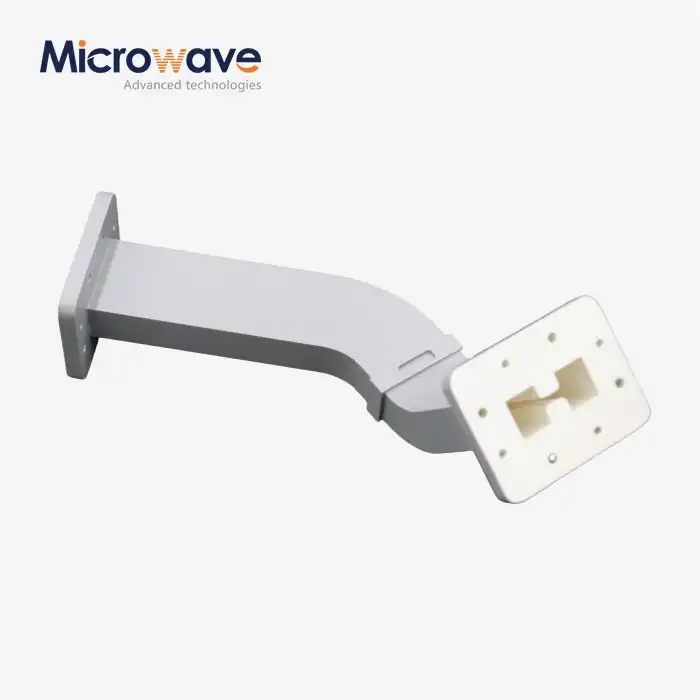 VIEW MOREDouble Ridge Waveguide Bend
VIEW MOREDouble Ridge Waveguide Bend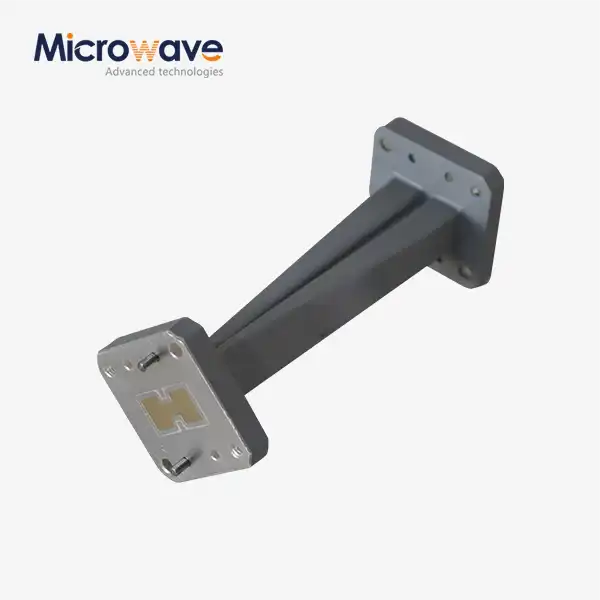 VIEW MOREDouble Ridge Twist Waveguide
VIEW MOREDouble Ridge Twist Waveguide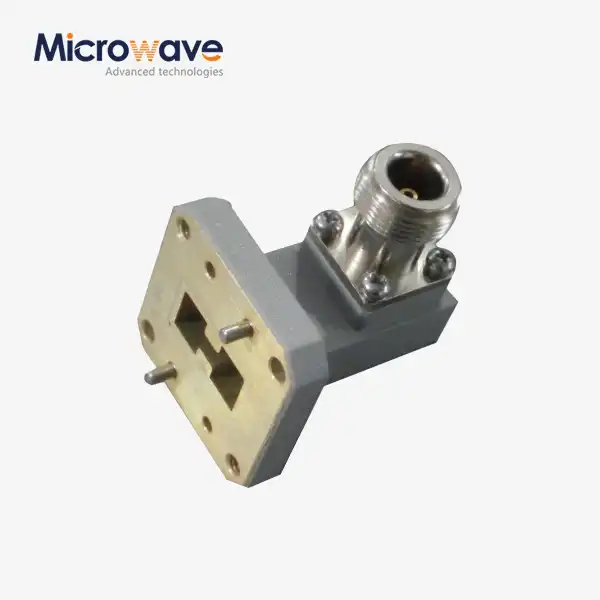 VIEW MOREDouble Ridged WG To Coaxial Adapter
VIEW MOREDouble Ridged WG To Coaxial Adapter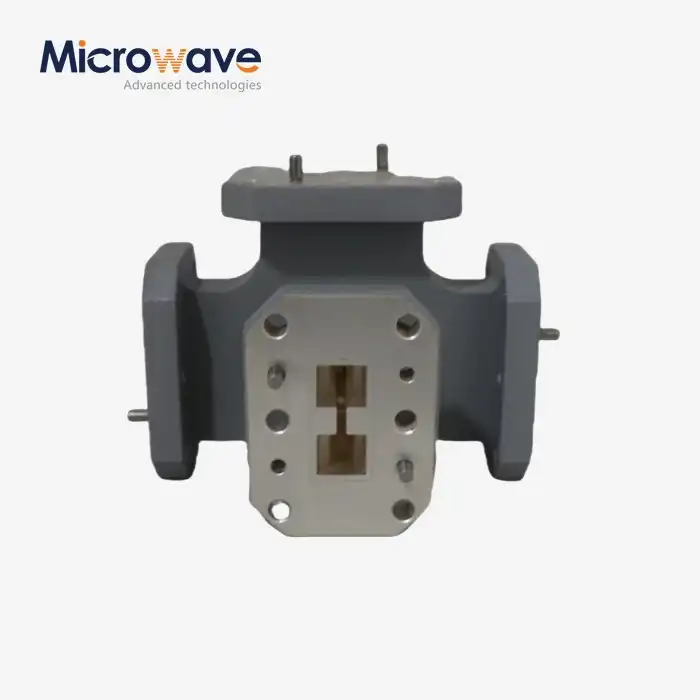 VIEW MOREDouble-Ridged Waveguide Magic Tee
VIEW MOREDouble-Ridged Waveguide Magic Tee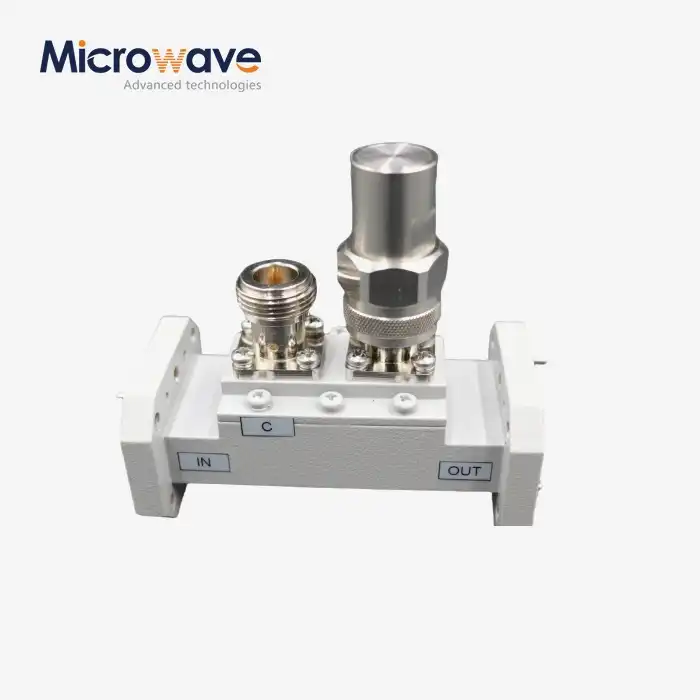 VIEW MOREDouble-Ridged Waveguide Loop Coupler
VIEW MOREDouble-Ridged Waveguide Loop Coupler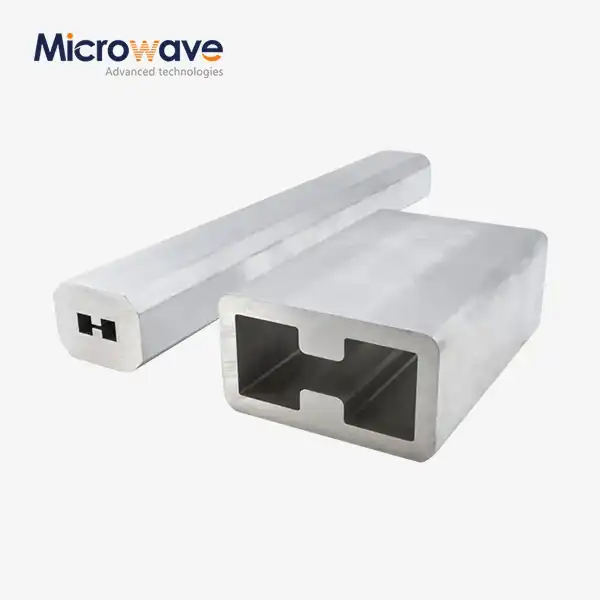 VIEW MOREDouble Ridge Waveguide Tube
VIEW MOREDouble Ridge Waveguide Tube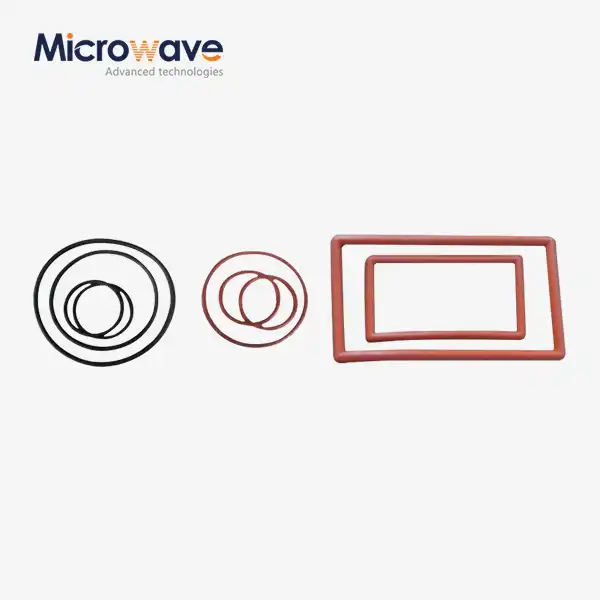 VIEW MOREWaveguide Flange Gasket
VIEW MOREWaveguide Flange Gasket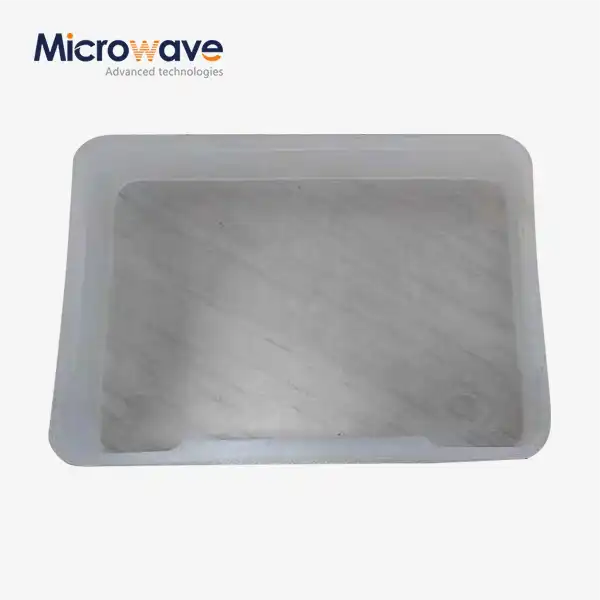 VIEW MOREPlastic Flange Caps
VIEW MOREPlastic Flange Caps




